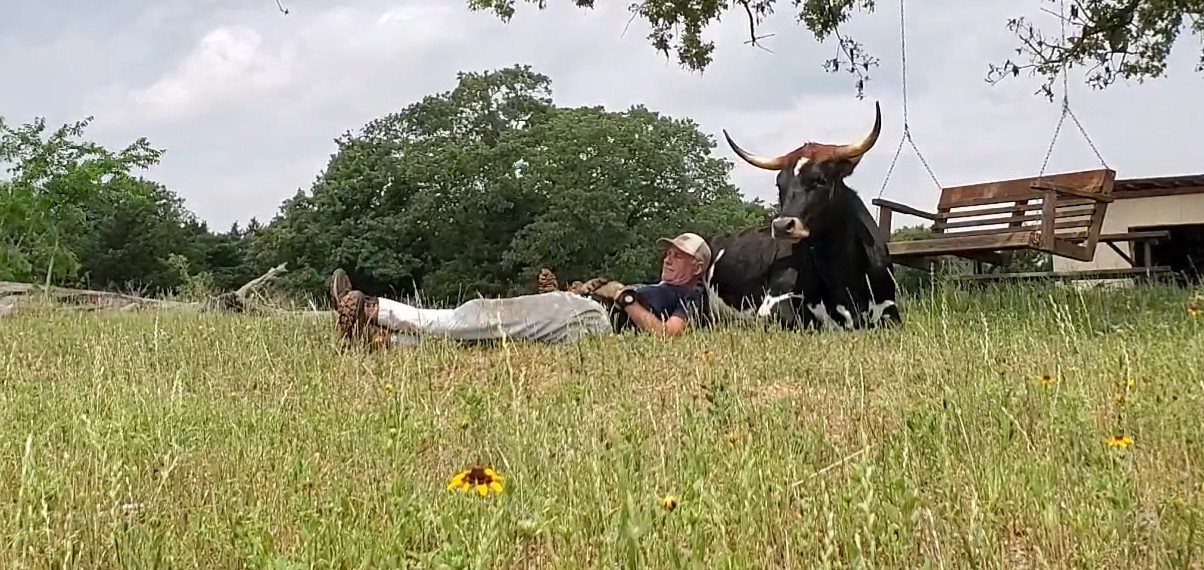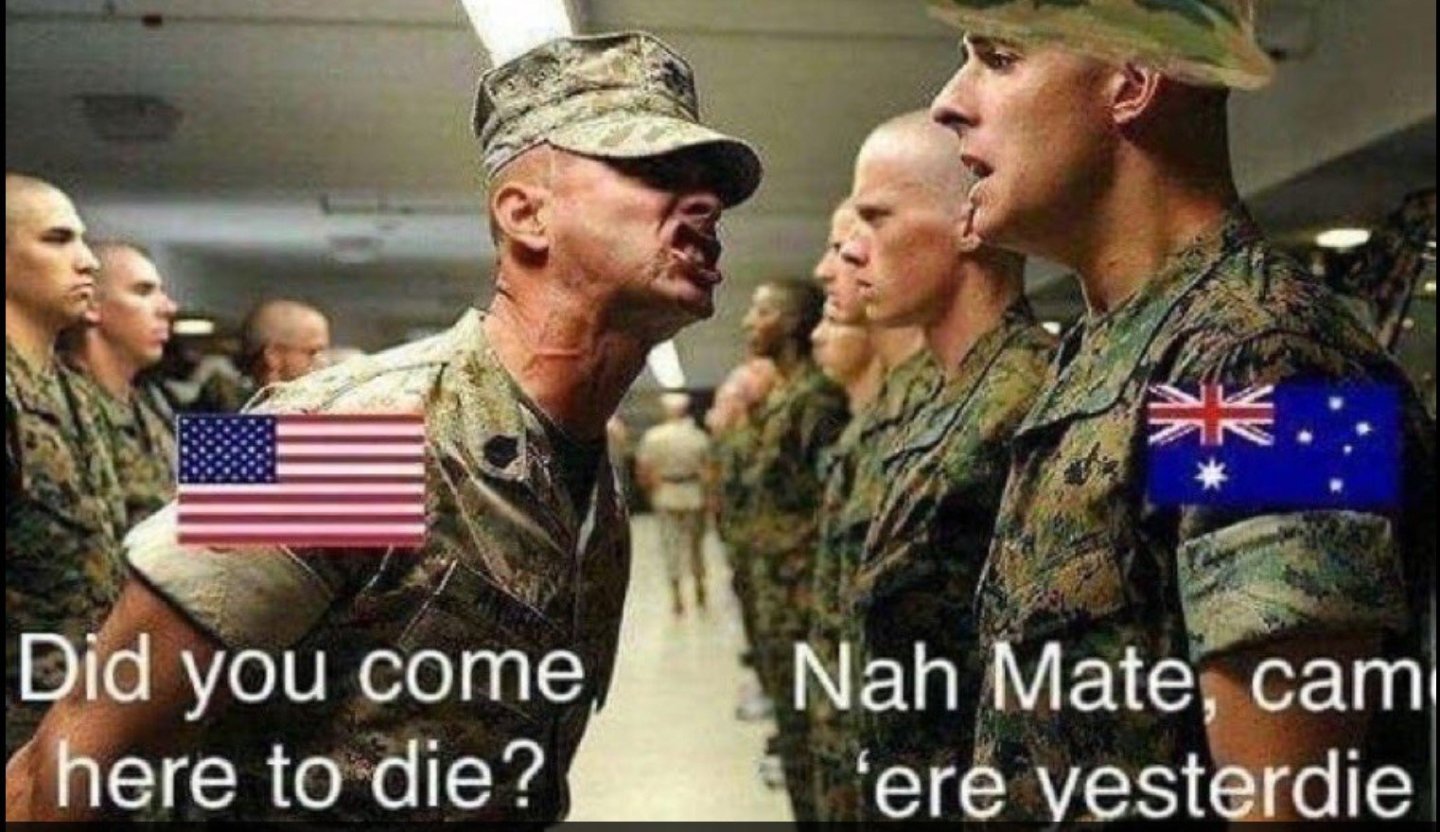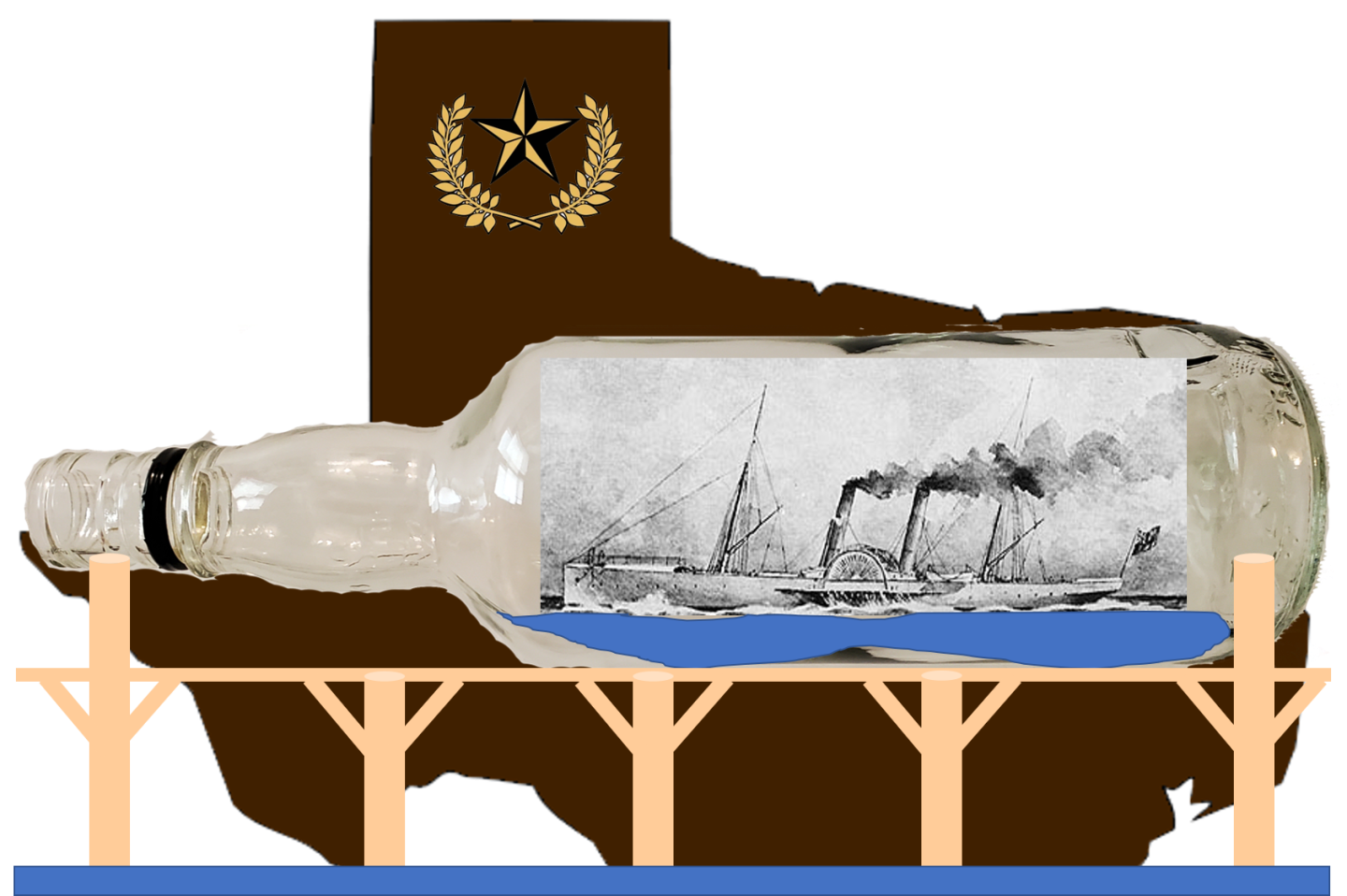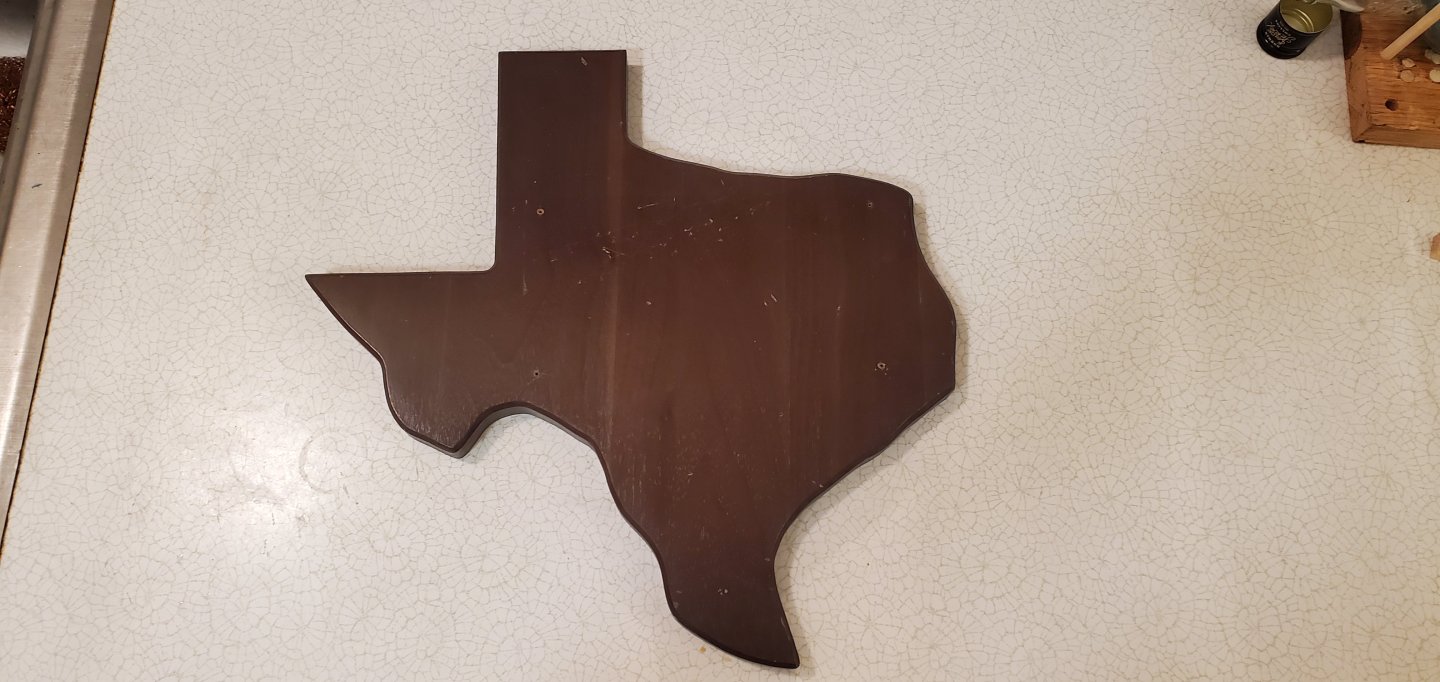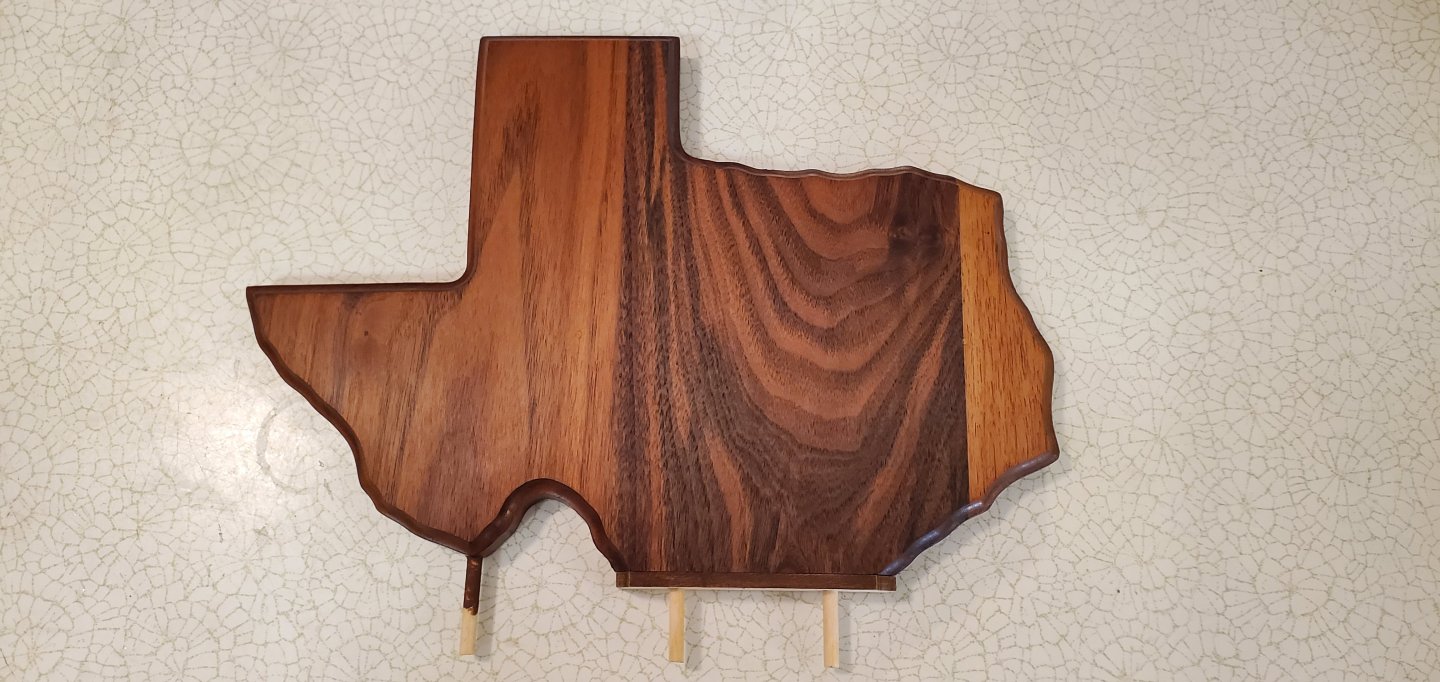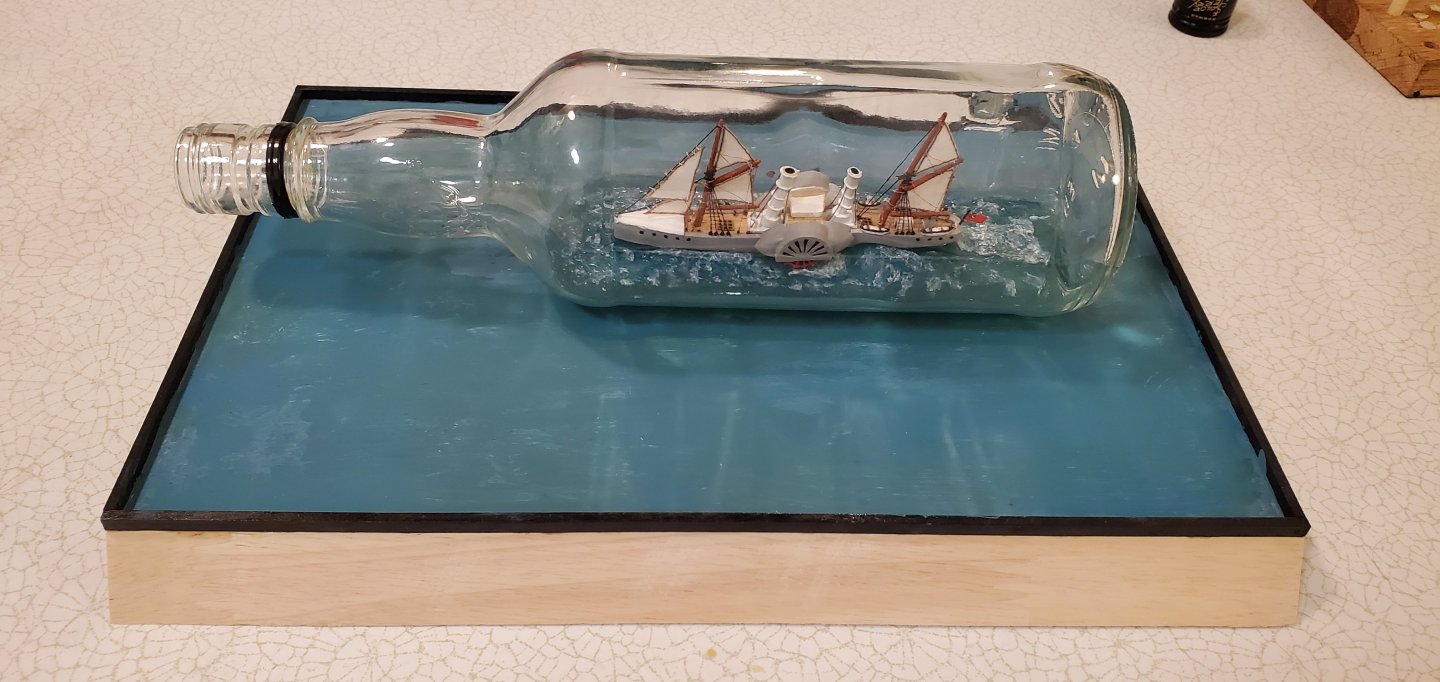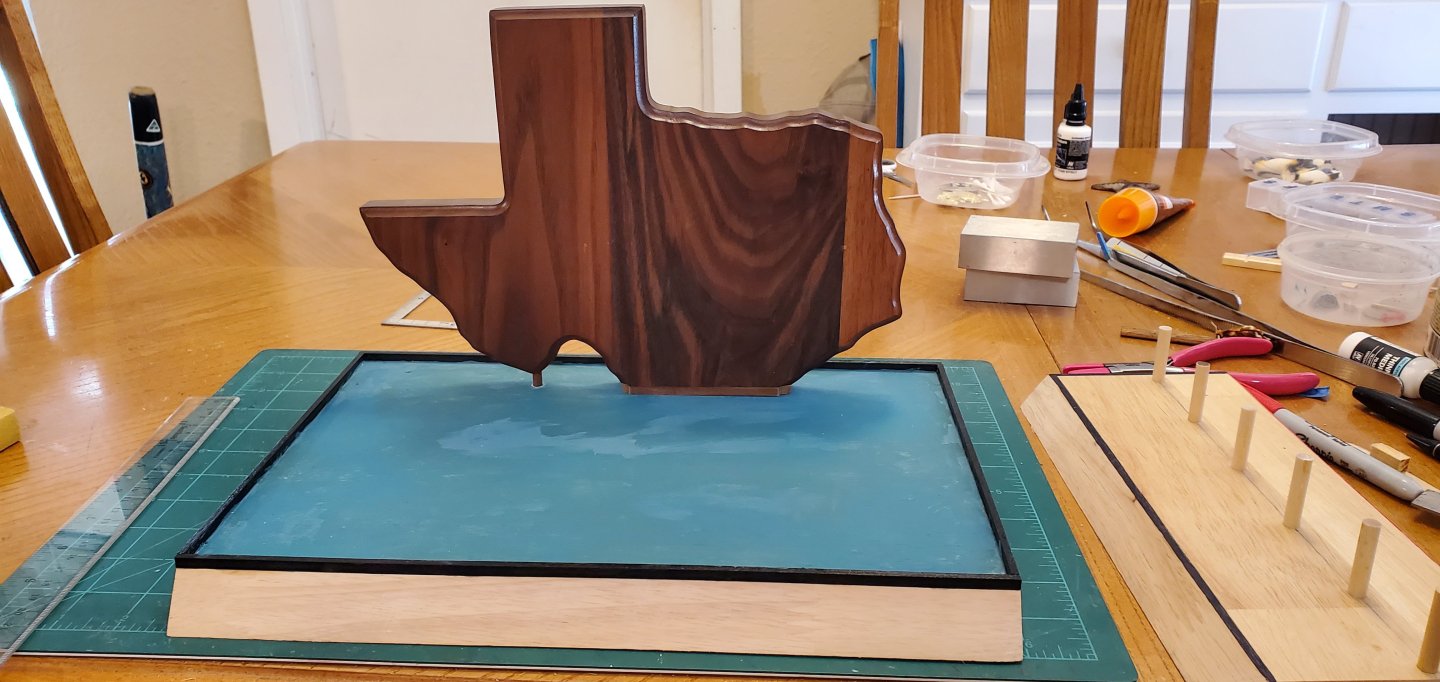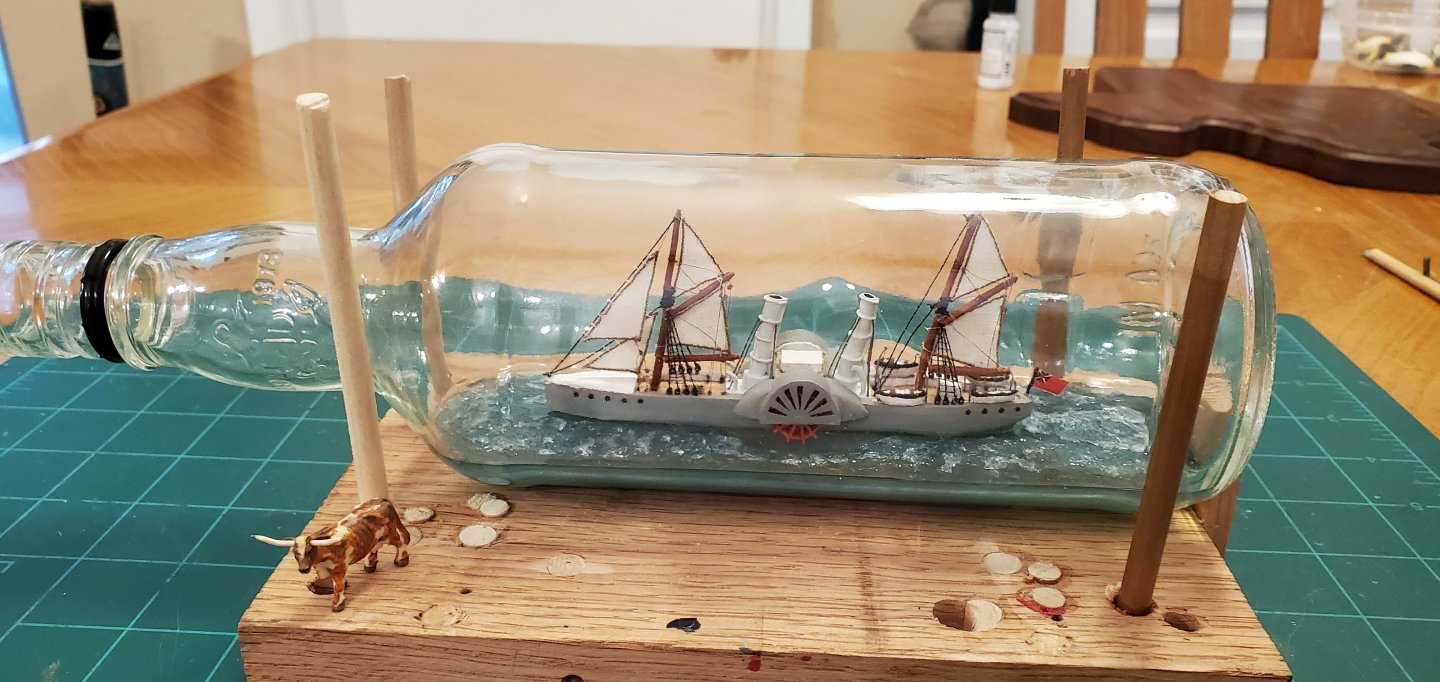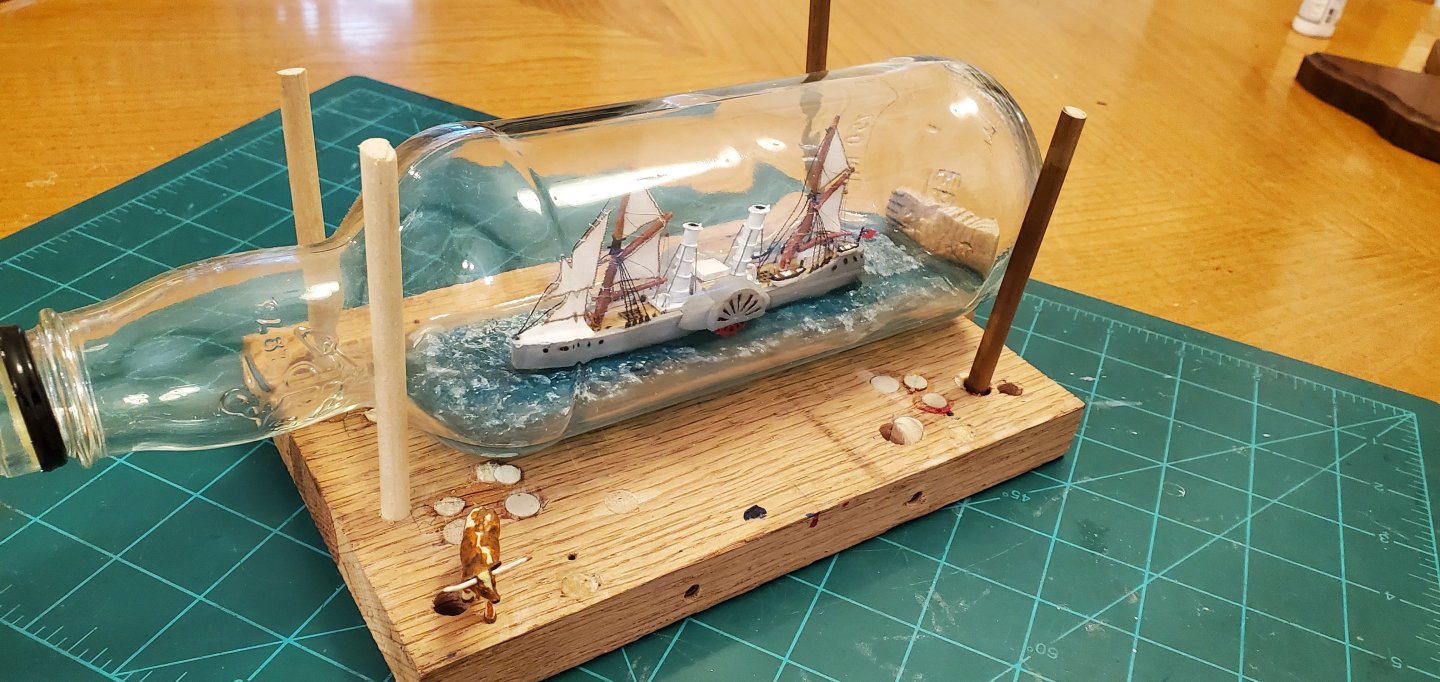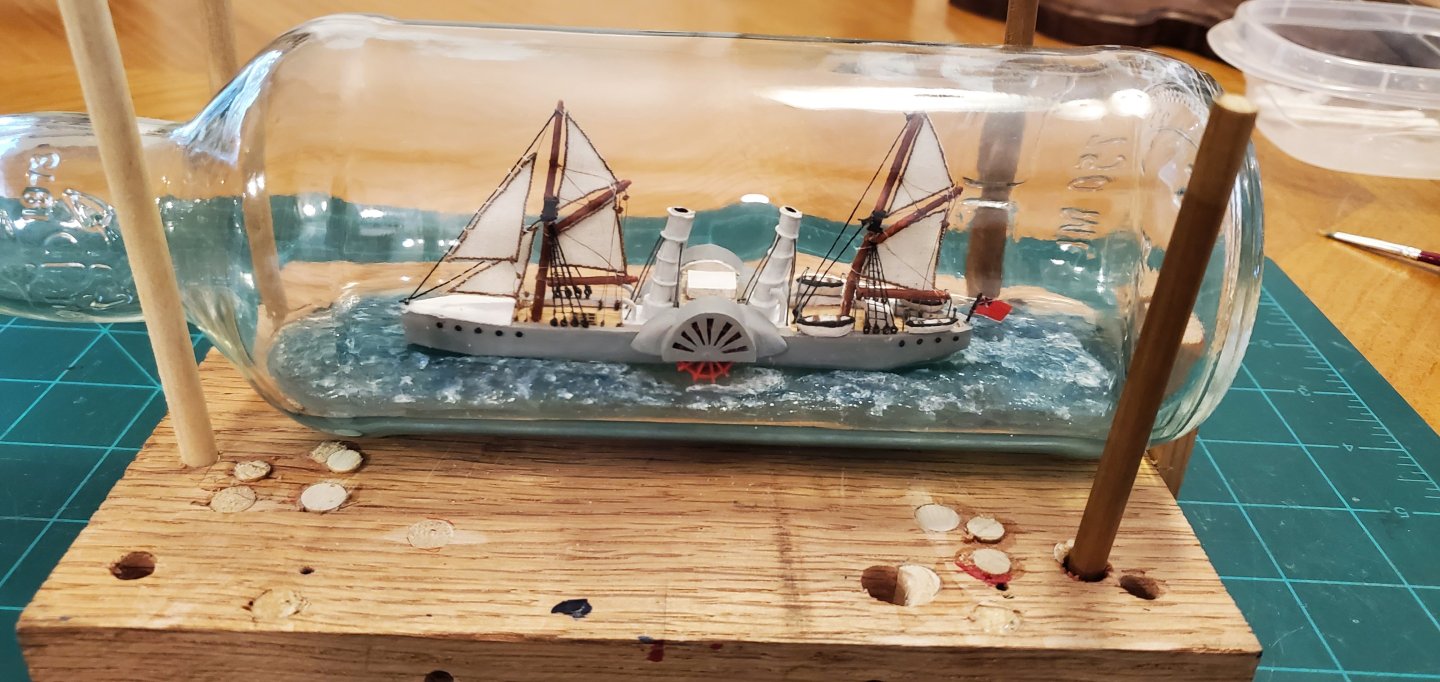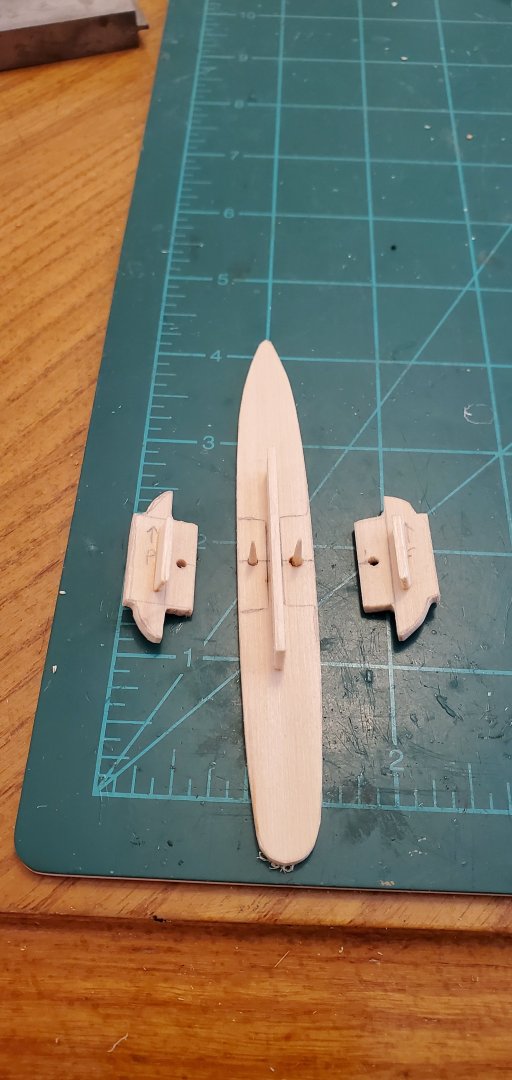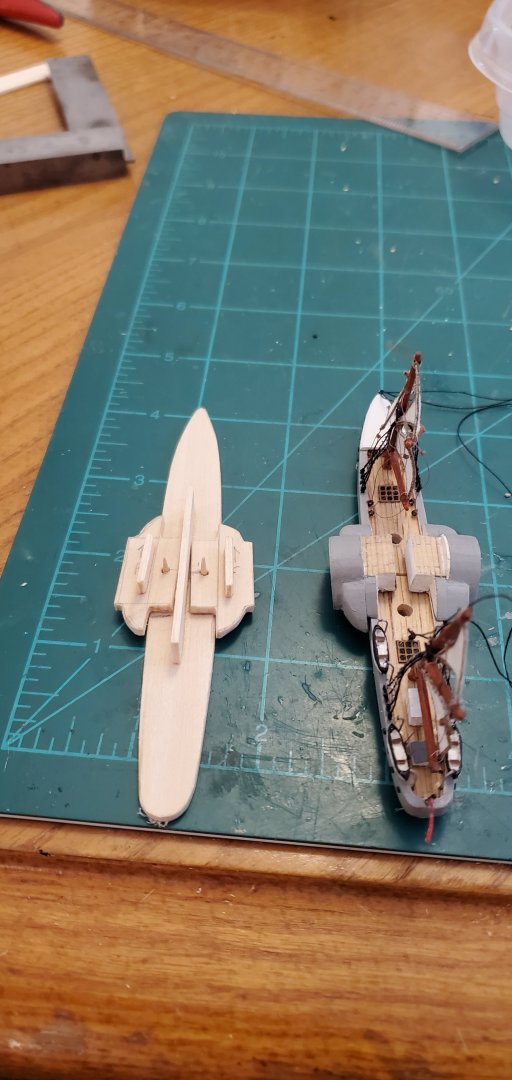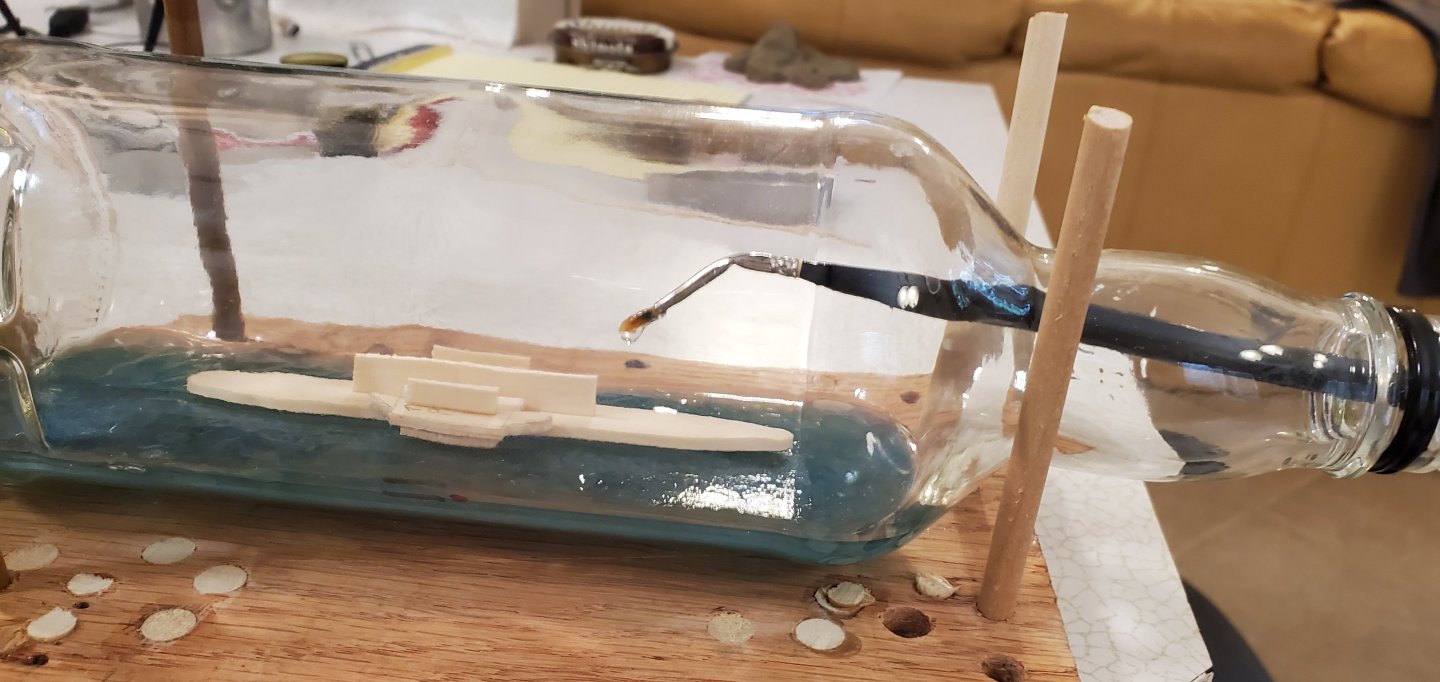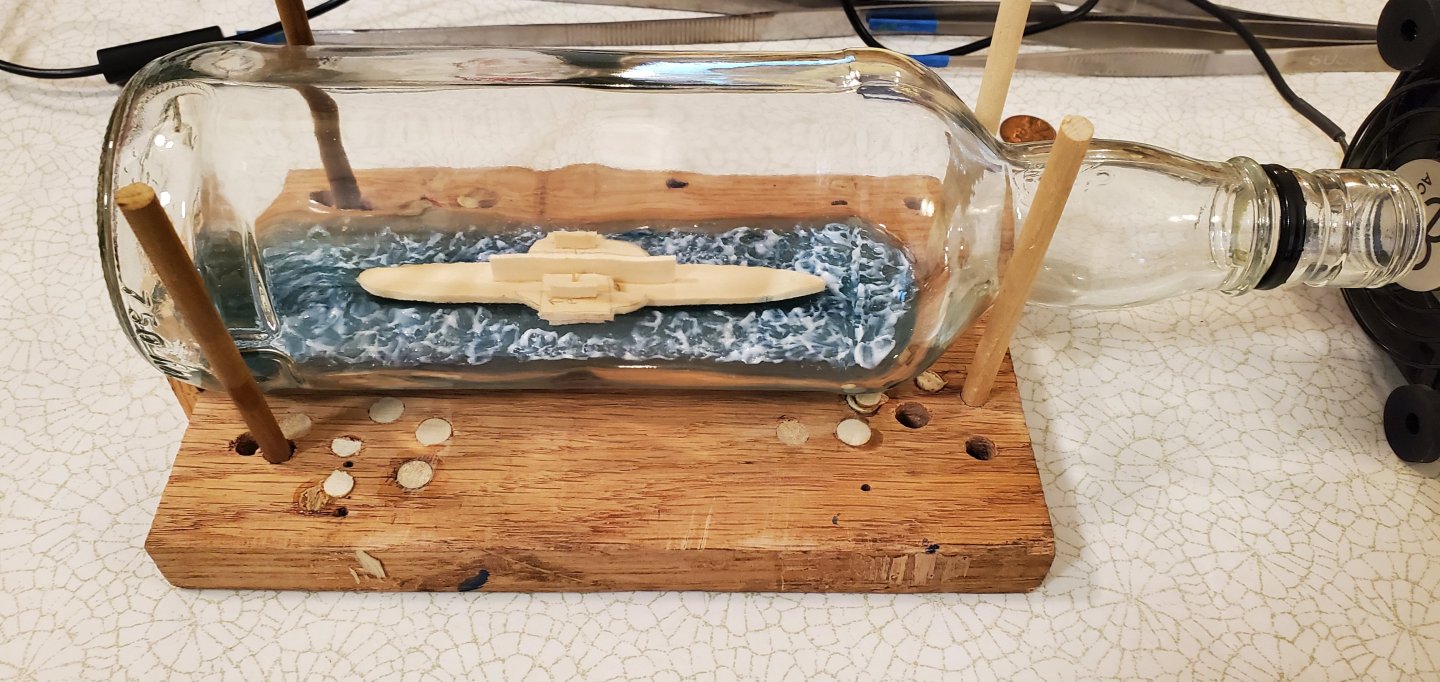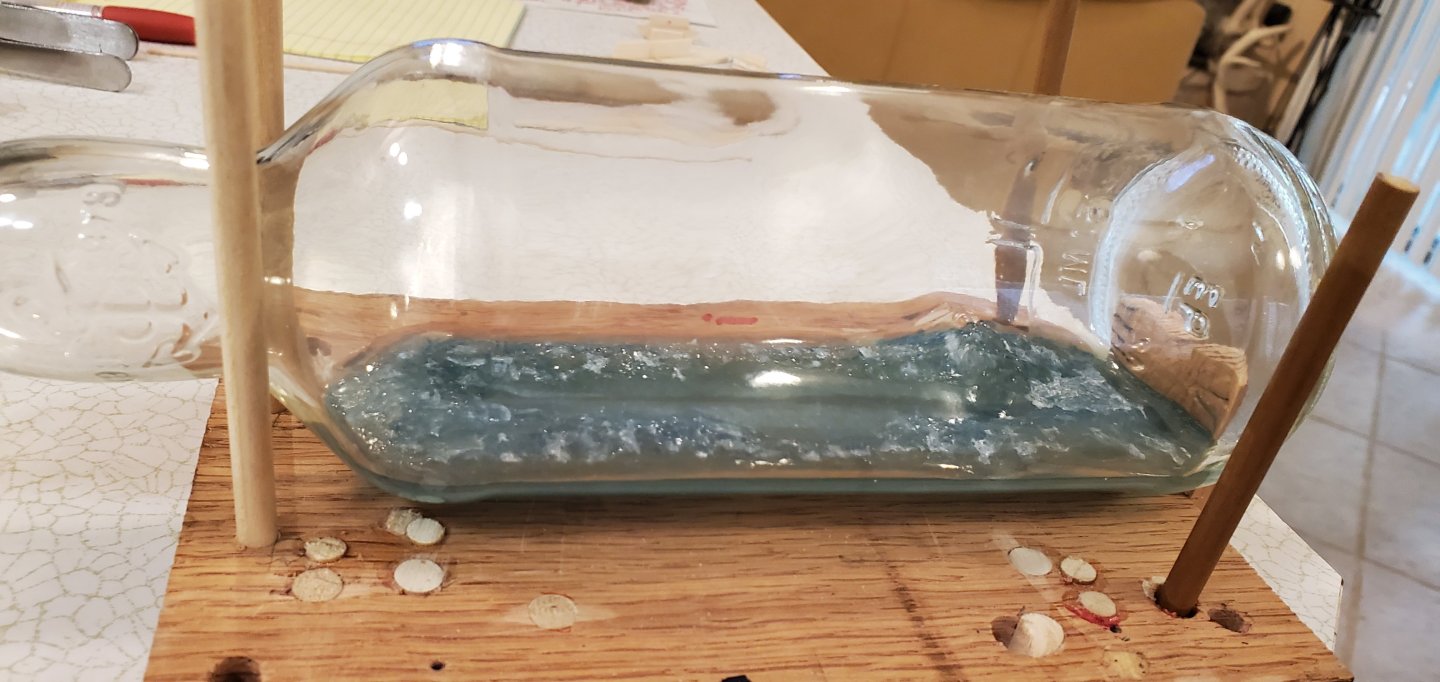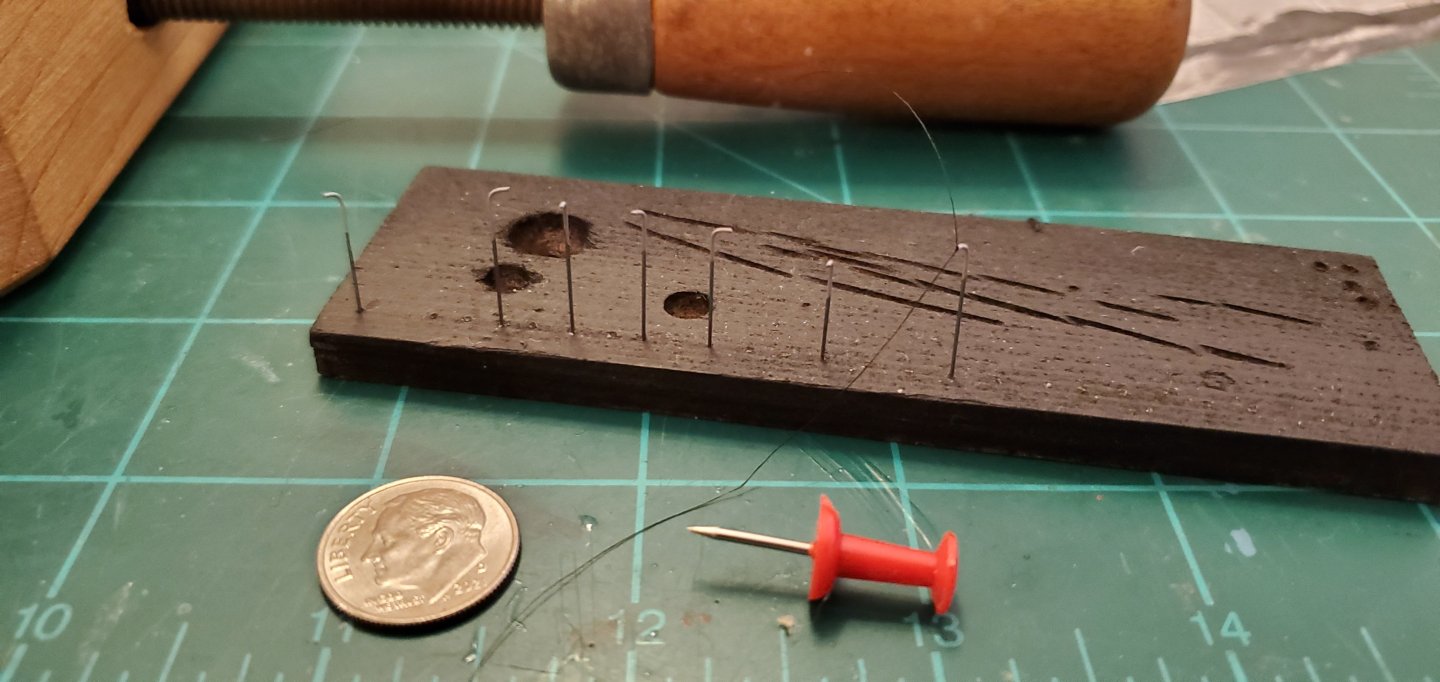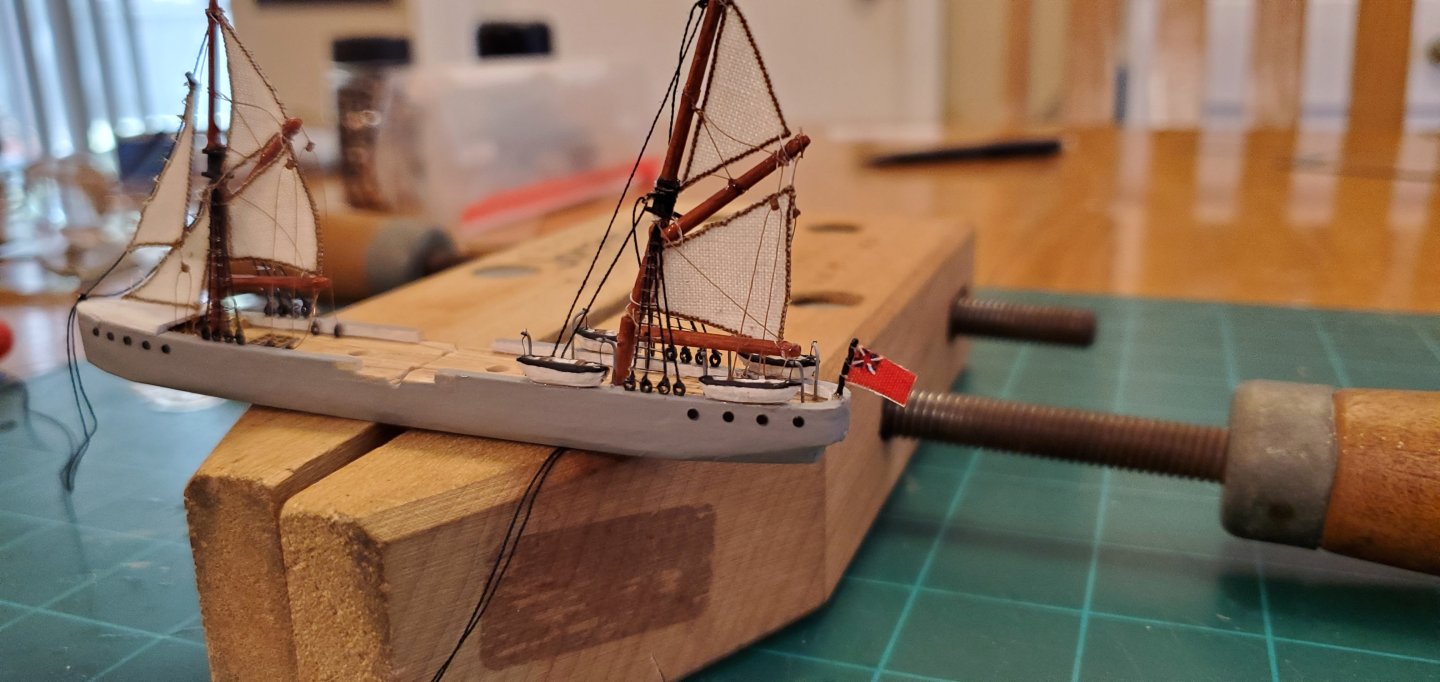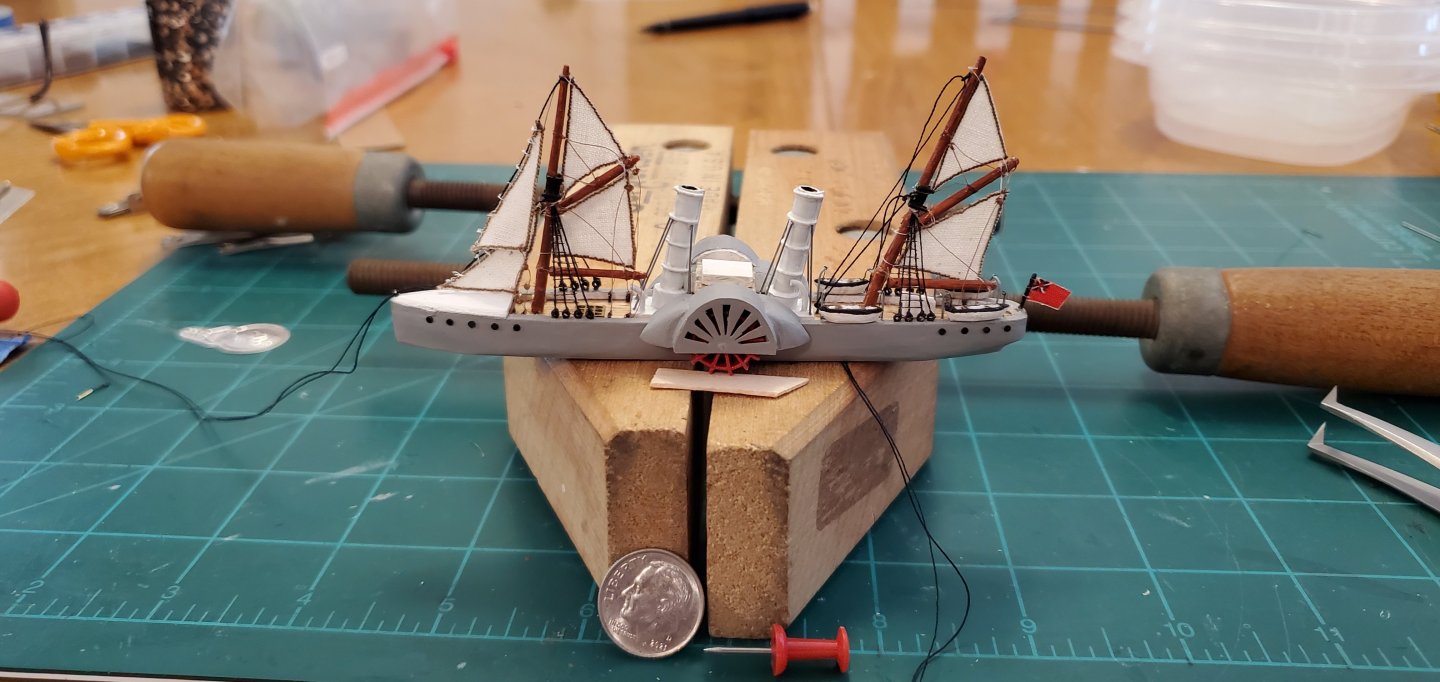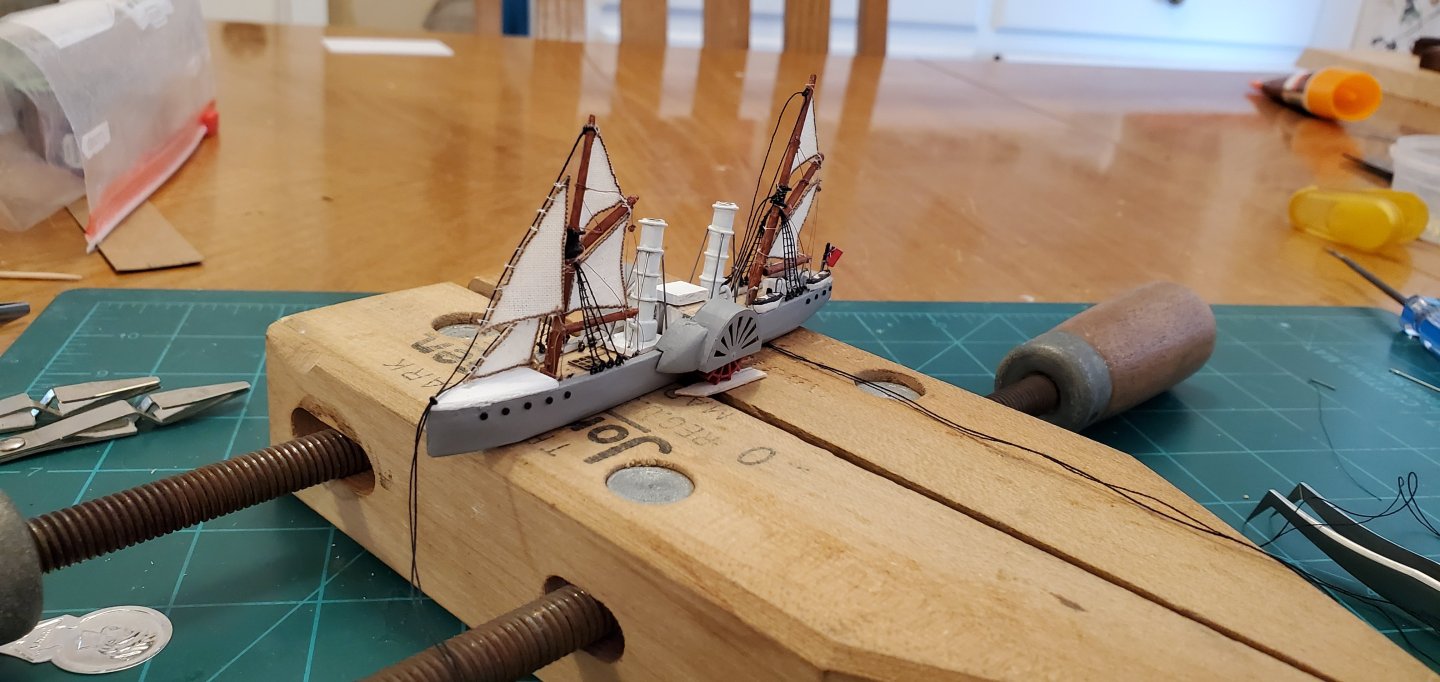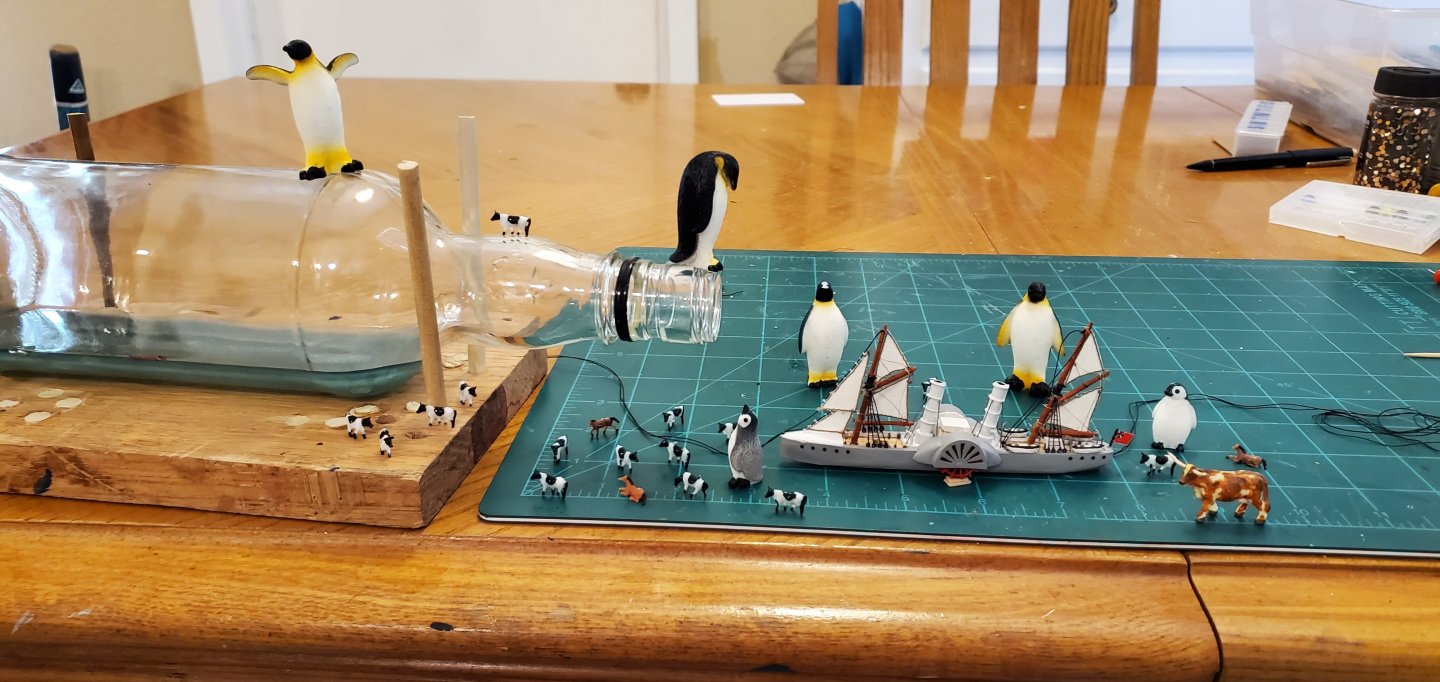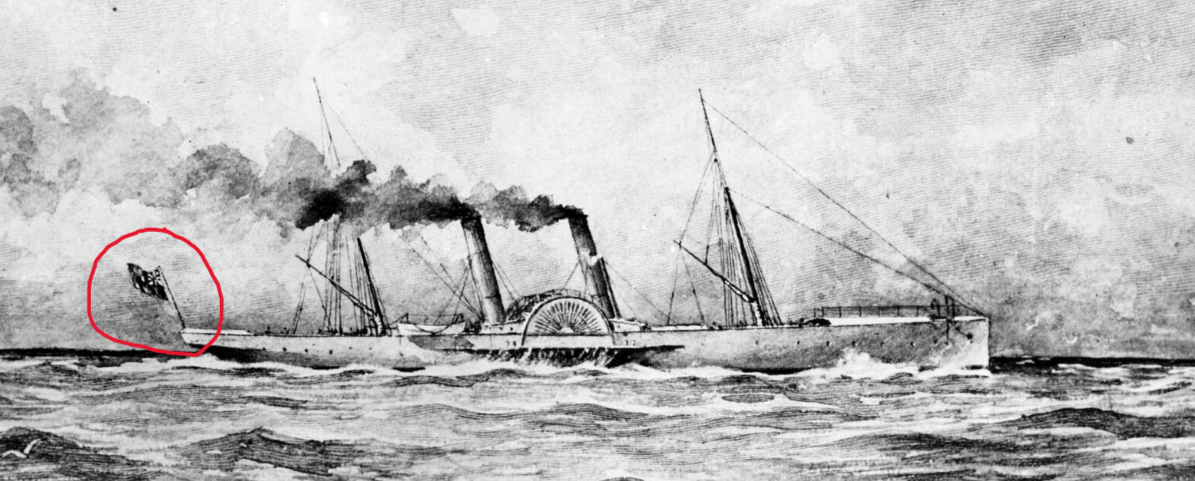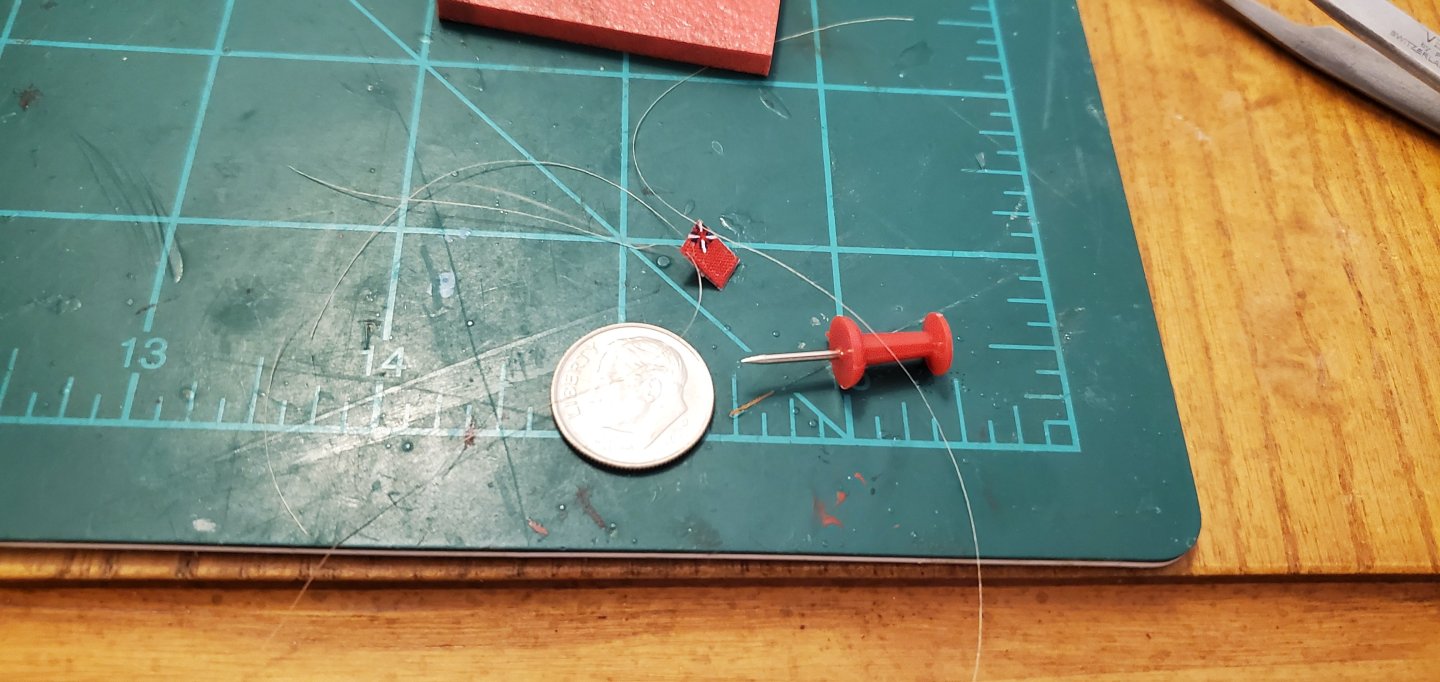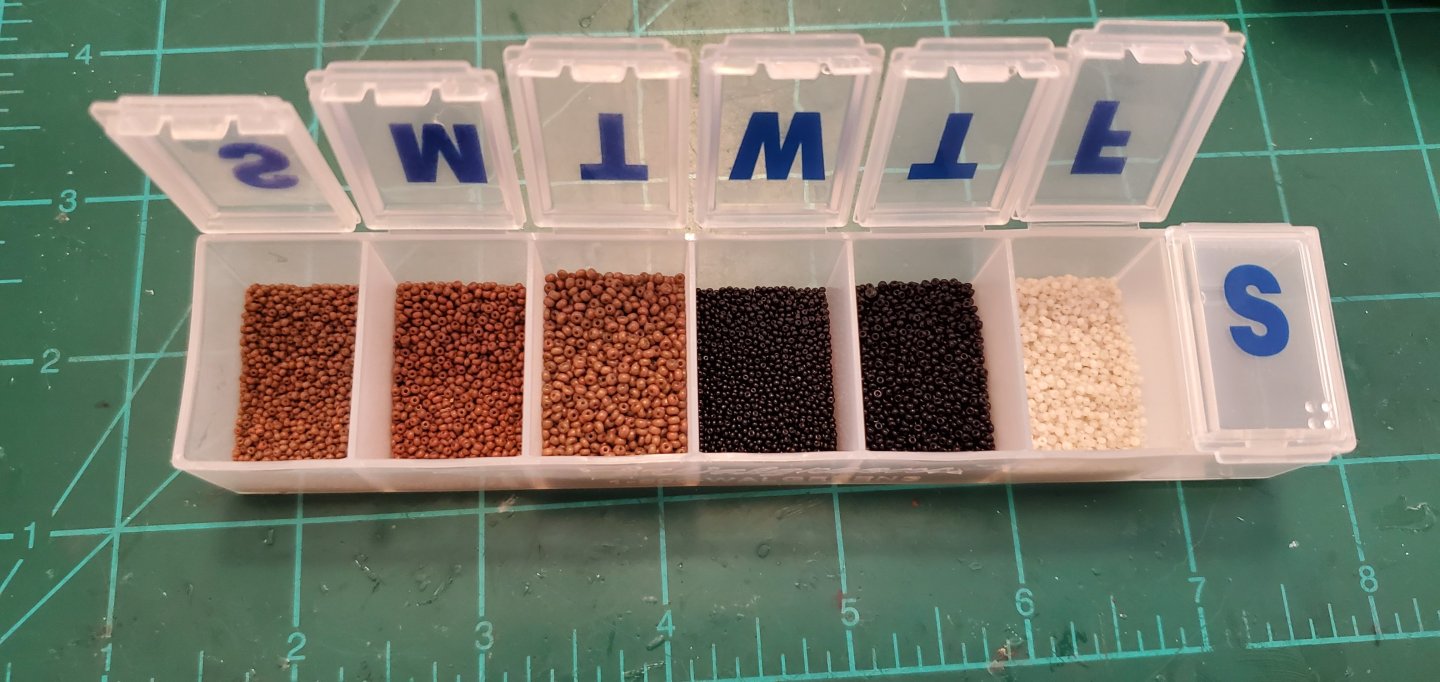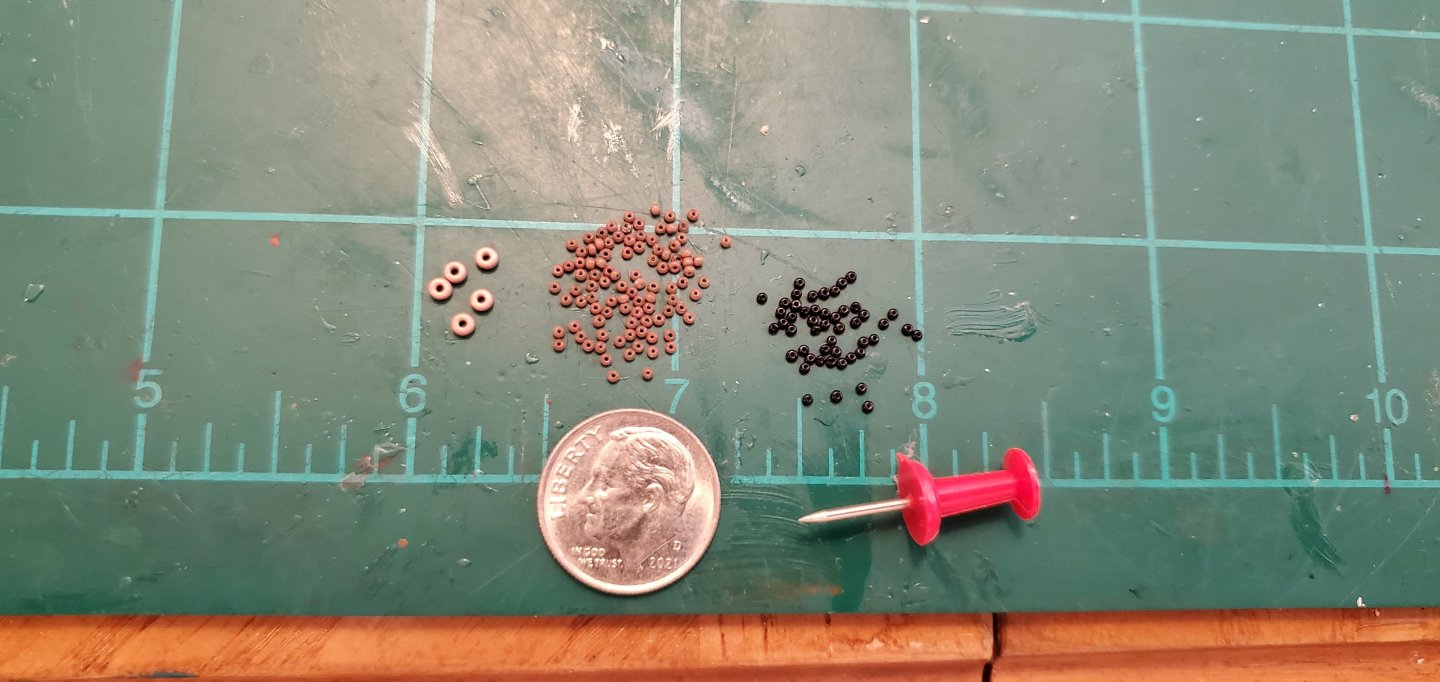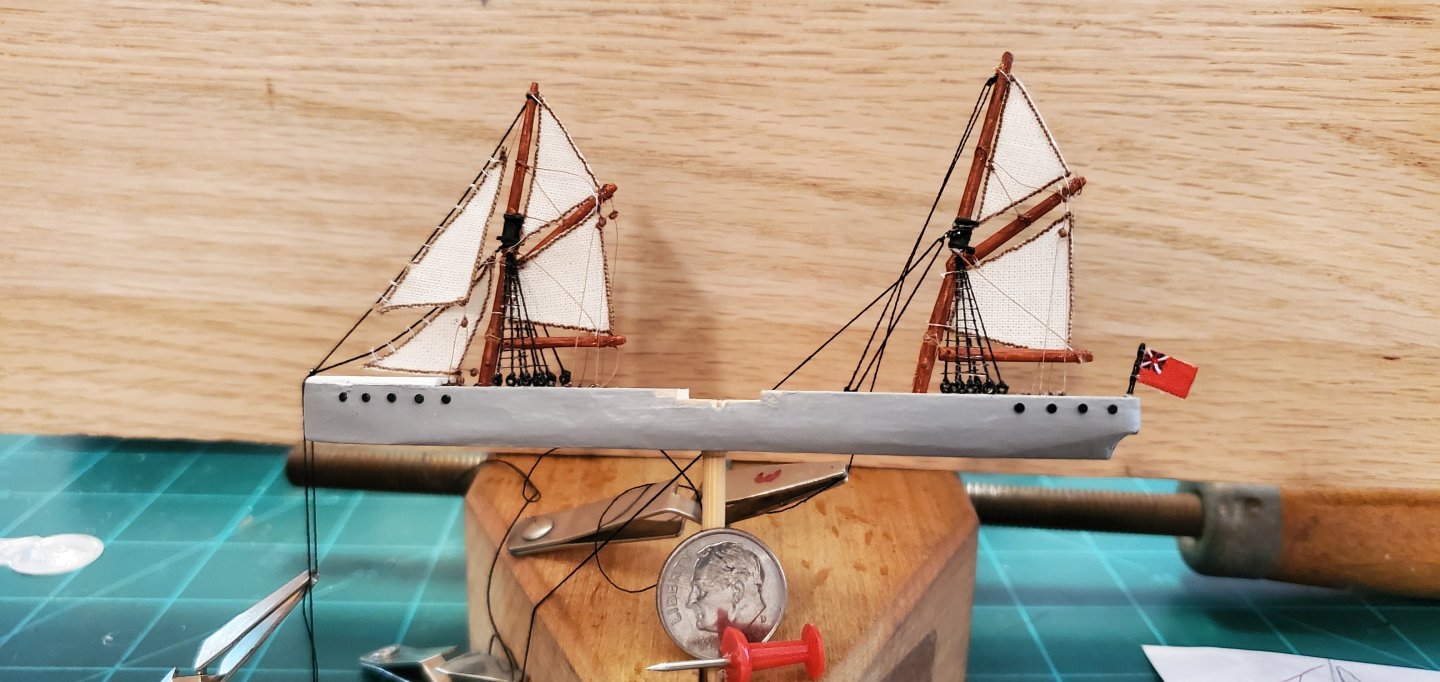-
Posts
1,916 -
Joined
-
Last visited
Content Type
Profiles
Forums
Gallery
Events
Everything posted by Glen McGuire
-
I thought you were pulling my leg, Grant, but I checked on Amazon and there really is a book by that name! I may have to get that one. Here's a question for you - Here in the US, someone from Texas like me talks a lot different than someone from the the northeast (like Boston) or the west coast (like California). Do folks in different parts of Australia have significantly different accents and/or ways of talking?
- 235 replies
-
- Banshee II
- Bottle
-
(and 1 more)
Tagged with:
-
When I see comments from folks like @BANYAN, @gjdale, @PvG Aussie, I try to imagine the Australian accent as I read them. I saw this meme the other day and it's helping me with the accent. Now, on to stage 2 of the project which is the display base. As a reminder, here's the original idea suggesting the civil war era Galveston, Texas water front where the Banshee II made it's one and only blockade run. For the backdrop, I've got several walnut cutouts of Texas. The finish was a little dark and had some wear, so I sanded it off and refinished it. Then I made a horizontal cut about halfway between San Antonio and Corpus Christi to make it the proper height that I needed. Finally, I added some dowels that will secure it to the base. For the actual base, I put down a layer of acrylic paint for the basic water color that I wanted. Here's the backdrop added. The next step is adding about a 1/8" layer of epoxy resin for the actual water. Then I have to decide whether I should add ripples/small waves to the water then build the wharf or vice-versa..
- 235 replies
-
- Banshee II
- Bottle
-
(and 1 more)
Tagged with:
-
@gjdale, @Javelin, @Paul Le Wol, @Rick310, @Knocklouder, @Ian_Grant, @Keith Black, @Desertanimal - Thank you for the comments and for suffering thru those videos! Forget the tot, I needed a barrel of Bundy rum after that experience!
- 235 replies
-
- Banshee II
- Bottle
-
(and 1 more)
Tagged with:
-
Dang, Roel! Your comments make it sound like you were right there with me! You describe EXACTLY the things I struggled with. Yes, on the first funnel, I was trying to change the angle of the funnel by slightly releasing pressure on the tweezers handle without dropping the funnel. The third time was the charm on that mess. Yes, you make a great observation about working out of centerline with tweezers (especially the foot-long ones I was using). The further they reached inside the bottle, the more off centerline they were. This made it hard, even with the locating pin, to drop the wheel assembly in the hole in the deck because the wheel cowlings needed to line up and rest on top of the gunwale. Yes, the second funnel install was smooth because of what I learned dropping the little pilot house in between the two wheel houses. While doing the pilot house, I realized that the fore mast and sails would actually fit between the prongs of the tweezers while they were holding something. So I figured if I could get the funnel over and just beyond the fore mast, I could drop it straight down into place. The challenge was that there was not enough room between the top of the mast and the inside ceiling of the bottle. So I had to push the mast far enough down towards the stern to get the funnel past. But not too far or it would be in the way.
- 235 replies
-
- Banshee II
- Bottle
-
(and 1 more)
Tagged with:
-
It was Man vs Model again last night. But this bout wasn't even close. Man emerged victorious while suffering a minimum of mental wounds. The insertion and assembly process went surprisingly well. Maybe it's because I actually put a lot of thought and planning into the process this time, instead of just charging in guns a blazing. Regardless, I am relieved and very happy with the results. For those that want to see all the steps in how the sausage was made, here's 3 videos. Part 1 (9 minutes) - https://www.youtube.com/watch?v=I10HQDJBoXI Part 2 (9 minutes) - https://www.youtube.com/watch?v=76UNcu8hvCo Part 3 (4 minutes) - https://www.youtube.com/watch?v=3KX4MUFjlps Here's 2 pics of the Banshee II after getting her secured inside ol' Sailor Jerry's long neck bottle. As a final touch, I added some froth from the paddle wheel and also along the hull's edge where it hits the water. Wait, "final touch"? Did I hear someone say "what about the smoke coming from the funnels???"
- 235 replies
-
- Banshee II
- Bottle
-
(and 1 more)
Tagged with:
-

Greetings from the Nation's Capital
Glen McGuire replied to AreyPotter's topic in New member Introductions
Great to have you here, Scott! -
That is interesting, Johnny. I had not heard of demi-round Czech beads before. I agree with you that having a bead that was a bit flattened would look better for our application than round. Just getting the thread thru the hole in my 1mm beads is maddening enough. I cannot imagine trying to strop it! Nor would I want to try to rig 2mm deadeyes like Keith mentioned.
- 235 replies
-
- Banshee II
- Bottle
-
(and 1 more)
Tagged with:
-
You gave us a whole new meaning to the term "build log"! 🤣
- 235 replies
-
- Banshee II
- Bottle
-
(and 1 more)
Tagged with:
-
The last step before trying to assemble the ship in the bottle is texturing the water with some mild waves and a few whitecaps. First, I built a fake ship that matched the real ship's footprint and inserted it into the bottle. That would make it easy to texture the water around where the ship will rest. I first tried dabbing around some Woodland Scenics Water Waves to give me some wave and ripple action. The Woodland Scenics product is supposed to hold it's shape while drying. Unfortunately, it did not do that for me. After I applied it, it self-settled into droopy puddles. Not what I was looking for. So I went back to the acrylic medium gel gloss that I'd used with success on several previous SIBs. I know it will hold its shape. The gel gloss goes on rather whitish as you can see below, but it dries clear (unless you put it on too thick). After the gel gloss dried, I hit the wave edges with some diluted white paint to highlight the waves. Now it's time to get that ship inside the bottle! Let's
- 235 replies
-
- Banshee II
- Bottle
-
(and 1 more)
Tagged with:
-
You are absolutely right, Roel. And the extra long neck of Ol Sailor Jerry's bottle is not gonna help! Thank you for the kind words, Gary. As I suspect many of us do, every time I look at my work I see so many things I wish I'd done better. But that makes me look forward to the next project even more!
- 235 replies
-
- Banshee II
- Bottle
-
(and 1 more)
Tagged with:
-
Exceptional work, John! And what a magnificent gallery!
- 282 replies
-
- Bluenose
- Model Shipways
-
(and 1 more)
Tagged with:
-
Dang, Ian. Sorry to hear the test on the lake did not go as planned. However, I am confident you will figure out what adjustments to make. The eyes are a nice touch!
- 536 replies
-
- Quadrireme
- radio
-
(and 1 more)
Tagged with:
-
Interesting discussion about beads. Now if I could only find all the ones I sent flying in various directions while trying to hold them with tweezers. Ugh!! On to the ship's boats and davits. Here's my "davit board" where I staged them for painting and tying on the threads that will attach to the ship's boats. I pre-drilled tiny holes in the bow and stern of each of the ship's boats so I could insert the thread connecting them to the davits. Here's what it looks like with all the little boats and davits in place. Again, the boats rest on the bulwark instead of hanging from the side because that's the only way the assembly fits inside the neck of the bottle. Here's the whole ship with all the pieces in place. By far the most challenging ship I've tried to build. But I fear a bigger challenge awaits when I try and put it all together inside the bottle. In fact, word got out about the potential disaster that awaits and an expectant crowd has already begun to gather.
- 235 replies
-
- Banshee II
- Bottle
-
(and 1 more)
Tagged with:
-
Texas longhorns on a Mississippi riverboat! They look awesome!! Just get them a few hay bales and they'll be happy.
- 85 replies
-
- King of the Mississippi
- Artesania Latina
-
(and 2 more)
Tagged with:
-
I took a detour and decided to try making a small flag to fly from the stern as shown in the painting of the original Banshee. The Banshee II painting has the flag pole, but no flag for whatever reason. The Banshee II, like most blockade runners, was made in England and flew the Red Ensign flag of the Royal Navy. For my attempt at duplicating the Red Ensign, I cut a 7mm x 5mm rectangle from red shirt cloth. Taking my finest tip paint brush, I drew some white lines and blotched on a bit of navy blue to make something that sort of resembled the familiar Union Jack in the corner. Then I added some fly-tying thread for attachment to the flag pole. Now, on to the running rigging. One of my goals with SIBs is to get better with each build and figure out how to add more detail to the ship. I’ve always wanted to incorporate blocks into the running rigging on my ships, but haven't been able to figure out a good way to do it. Small beads were the first thing that came to mind. Unfortunately, the smallest beads I’ve been able to find are 2.1mm in diameter. While tiny, they look way out of scale on my ships. So I’ve just been ignoring the blocks. That all changed earlier this year when I was in Boston for the annual model show put on by the USS Constitution Model Shipwright Guild. I met a guy there named Alex Bellinger who has been doing SIBs for 30+ years and is a true master of the craft. I noticed one of his SIBs had blocks so I asked him what he used. He had found these super tiny Venetian glass beads years ago and had bought a ton of them (he said he can't find them anymore). He was generous enough to send me what he promised was several lifetimes’ supply. The smallest of the Venetian beads are 1mm in diameter. The 2nd pic below shows the smallest venetian beads next to a few of the 2.1mm beads available at Michaels and Hobby Lobby. I got them from Mr. Bellinger too late to try on my Ghost Ship Jenny, so I get to try them out on the Banshee II. Having minimal sails and being an aft rigged ship with no yards, the Banshee II does not have a lot of places where I would want to put blocks. So I think it's the perfect ship to make a trial run with these tiny beads. At 1/700, the 1mm blocks are still out of scale, but not so much that they look horribly out of place. I got so focused on trying to work with these tiny things that I didn't take any in-progress pics. So here's the Banshee II with her running rigging in place, sporting a few blocks on the halyards and sheets. Also, the Red Ensign has been raised and flies from the stern. I think the davits and ship's boats are the only things left to add.
- 235 replies
-
- Banshee II
- Bottle
-
(and 1 more)
Tagged with:
-
Thanks, Pat! I am always grateful for your support, comments, and suggestions. Best wishes for a fantastic 3-week holiday!
- 235 replies
-
- Banshee II
- Bottle
-
(and 1 more)
Tagged with:
About us
Modelshipworld - Advancing Ship Modeling through Research
SSL Secured
Your security is important for us so this Website is SSL-Secured
NRG Mailing Address
Nautical Research Guild
237 South Lincoln Street
Westmont IL, 60559-1917
Model Ship World ® and the MSW logo are Registered Trademarks, and belong to the Nautical Research Guild (United States Patent and Trademark Office: No. 6,929,264 & No. 6,929,274, registered Dec. 20, 2022)
Helpful Links
About the NRG
If you enjoy building ship models that are historically accurate as well as beautiful, then The Nautical Research Guild (NRG) is just right for you.
The Guild is a non-profit educational organization whose mission is to “Advance Ship Modeling Through Research”. We provide support to our members in their efforts to raise the quality of their model ships.
The Nautical Research Guild has published our world-renowned quarterly magazine, The Nautical Research Journal, since 1955. The pages of the Journal are full of articles by accomplished ship modelers who show you how they create those exquisite details on their models, and by maritime historians who show you the correct details to build. The Journal is available in both print and digital editions. Go to the NRG web site (www.thenrg.org) to download a complimentary digital copy of the Journal. The NRG also publishes plan sets, books and compilations of back issues of the Journal and the former Ships in Scale and Model Ship Builder magazines.

